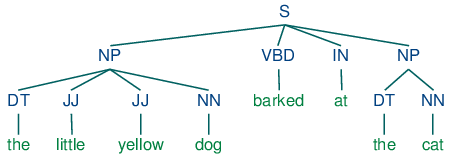maybe libraries like SpaCy, NLTK or Stanford NLP help
Closed dominik-pichler closed 9 months ago
maybe libraries like SpaCy, NLTK or Stanford NLP help
Pronounce will be replaced by reference entities.
Identify/Recognize all mentioned entities in the text
Solve Entity Disambiguation & Entity Linking Elon's vs Elon -> is the same but will not be recognized as the same thing
Co-Occurrence Graphs Evaluate the co-occurence of terms in a subtask
This could happen in multiple ways:
NLP Model (just as we did with the LLM right?), in Addition TACRED or Wiki80 could be helpful.
found @ https://neo4j.com/blog/text-to-knowledge-graph-information-extraction-pipeline/
Had a problem with coreference lib neuralcoref due to version conflicts. Due to time constraints, I'll take care of this last
2) Where is the meaning of the sentences hidden? Or is it enough to ask where the ideas are hidden? Actually, I would first need a good working definition of ideas. In this context, ideas are to be understood as concepts that a subject creates in order to make decisions for action. In other words, a premise on the basis of which the world is interpreted. This interpretation is then the foundation on which action decisions are made
In this case, it is a matter of extracting acting relationships. In particular, relationships from (subject-verb-subject)^n. Example: X greets Z)
To be separated from sentient relations ( X feels y about Z) which should come in the next step!
Problem: How do you depict actions spanning across multiple sentences ?
Resources here: https://towardsdatascience.com/named-entity-recognition-with-nltk-and-spacy-8c4a7d88e7da
Question: In the english language: Is the gramar structured in order? Meaning, give the following Wordtpyes: S1 - a1 - S2 - a2 - S3, could a1 also effect S3 or is it always only affecting S2.
Meaning, what are our chunk patterns ?
also, the question is, wether chunked subjects (including their attributes in the nodes) should be used ? It would make things easier if I could just work with NP & VDBs, this will likely increase the number of nodes ...

Quick train of thought: Is it not enough to extract the nouns and link them via sentences ?
The question is, if it is smarter to work with NP's or pure NNs? or, if I can maybe get both ? 🌊
or to have multiple graphs:
1) NP 2) NNs without attributes 3) NNs with attributes
Question: In the english language: Is the gramar structured in order? Meaning, give the following Wordtpyes: S1 - a1 - S2 - a2 - S3, could a1 also effect S3 or is it always only affecting S2.
Meaning, what are our chunk patterns ?
No, at least in german there are many examples that break this assumption, so I guess it is the same for english! "Slowly, eaten by the bear, the human starts to cry"
Further Overview of LLM alternatives
For now, I'll stop once the Rule Bases Methods work
so there then will be two versions: 1) LLM based Meaning/Knowledge Extraction 2) RB Meaning/Knowledge extraction -> Nouns will be nodes, corresponding sentences will be edges
so the first version is working. It just needs some cleaning
Instead of spliting the nodes with a LLM, other possibilites (syntactic dissemblement etc.) should be investigated